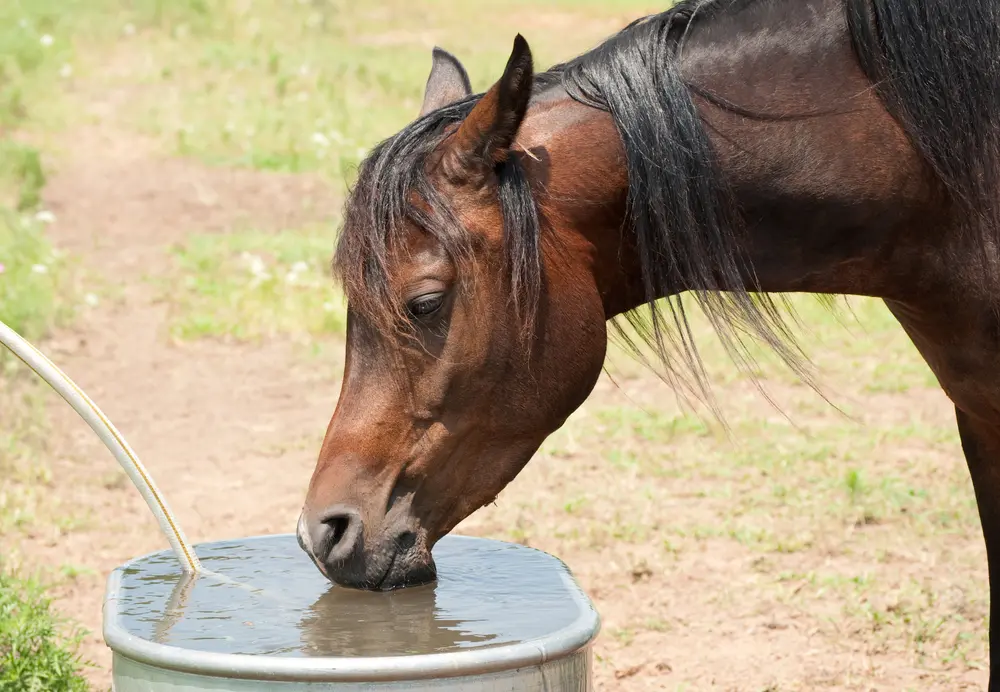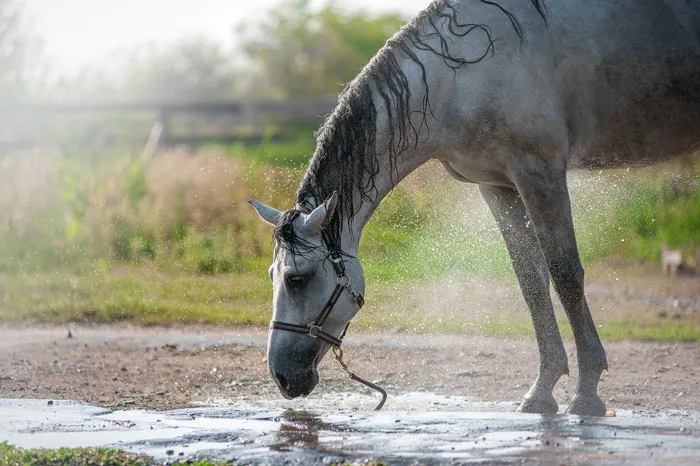As the weather heats up, keeping your horse cool becomes a top priority. Horses, like humans, can suffer from overheating, especially when they’re working hard or spending time in the sun.
Overheating can lead to heat stress, dehydration, and even heatstroke, which can be dangerous for your horse’s health. But don’t worry! With the right precautions and strategies, you can keep your horse comfortable and safe during the hot summer months. Here are 10 cool tips to help stop your horse from overheating when the mercury rises.
1. Provide Access to Fresh Water at All Times

Hydration is key to keeping your horse cool and healthy during hot weather. Always ensure your horse has access to fresh, clean water at all times. Dehydration can quickly lead to overheating, so encourage your horse to drink regularly. You can even add electrolytes to the water to help replenish any lost minerals during exercise or sweating.
2. Limit Work During Peak Heat
Avoid riding or working your horse during the hottest part of the day, typically between 10 AM and 4 PM. Try to schedule your training sessions early in the morning or later in the evening when temperatures are cooler. This will reduce your horse’s exposure to the sun and minimize the risk of overheating.
3. Use a Cooling Blanket or Sheet
A cooling blanket or sheet is a great tool to help regulate your horse’s body temperature. These sheets are designed to wick moisture away from your horse’s body, keeping them dry and cool. You can use them after exercise to help speed up the cooling process. Make sure to choose one that’s breathable and lightweight to avoid trapping heat.
4. Take Frequent Breaks During Exercise
If you do need to ride or work your horse during warmer weather, be sure to take regular breaks. Allow your horse to stand in the shade and catch their breath, especially if they are sweating heavily. Frequent rest periods give your horse time to cool down, reducing the risk of overheating. Keep an eye on their breathing and body language—if your horse is panting excessively or seems fatigued, it’s time to stop and cool them down.
5. Provide Shade and Shelter
Horses should have access to shaded areas where they can escape the direct sun. Whether it’s a natural source of shade like trees or a built-in shelter, make sure your horse has a place to relax out of the sun. If your horse is outdoors for long periods, a shelter or barn can provide relief from the heat and protect them from sunburn.
6. Cool Your Horse with Water
One of the best ways to cool your horse down quickly is by hosing them off with cool water. Spray their body, focusing on the areas where heat tends to build up, like the neck, chest, and legs. Avoid using ice-cold water, as it can cause blood vessels to constrict, which might make cooling down slower. Instead, use water that’s cool, but not freezing. If your horse is particularly hot, you can scrape off the excess water with a sweat scraper to help enhance cooling through evaporation.
7. Clip Your Horse’s Coat
During the summer months, a thick coat can trap heat and make it harder for your horse to cool down. If your horse has a long winter coat, consider clipping it to help with heat regulation. This is especially helpful for horses who are regularly worked or exercised. Be sure to leave a thin layer of coat for protection from the sun, or use a sunblock designed for horses to prevent sunburn.
8. Monitor Your Horse’s Temperature
Investing in a thermometer is a great way to keep track of your horse’s body temperature. Normal body temperature for a horse is around 99-101°F (37-38°C). If your horse’s temperature rises above 103°F (39.4°C), it’s a sign they’re overheating and need immediate attention. Keep an eye on their pulse rate and respiratory rate as well—if these are elevated, it’s time to cool them down.
9. Use Fans or Misting Systems
If your horse is kept in a stable or barn, using fans or a misting system can help keep the air cool. Fans can improve airflow and reduce humidity, while misting systems release a fine spray of water that cools the air and your horse. These can be especially helpful if your horse is confined to a stall during the day.
10. Feed Cool and Fresh Forage
Feeding your horse the right type of forage is another way to help prevent overheating. Fresh grass or hay that hasn’t been stored for too long is often cooler and easier for your horse to digest. Avoid feeding large meals during the heat of the day, as digestion generates heat. Instead, feed smaller, more frequent meals during the cooler hours of the morning or evening.
Bonus Tip: Know the Signs of Overheating
In addition to these cooling tips, it’s important to recognize the signs of overheating so you can act quickly. Symptoms of overheating in horses include:
- Excessive sweating
- Rapid breathing or panting
- Increased heart rate
- Lethargy or weakness
- Muscle tremors or weakness
- Dark-colored urine (a sign of dehydration)
If you notice any of these signs, take immediate action to cool your horse down and contact your veterinarian if needed.
Keeping Your Horse Cool and Comfortable
Keeping your horse cool during the warmer months doesn’t have to be complicated. By following these 10 tips, you can ensure that your horse stays comfortable, healthy, and safe, even when the mercury rises. Remember, prevention is key. The more proactive you are about managing your horse’s temperature, the less likely they are to suffer from heat stress or overheating.
With a little care and attention, your horse can stay cool, calm, and ready to take on whatever summer activities come their way. Stay cool, and so will your horse!

